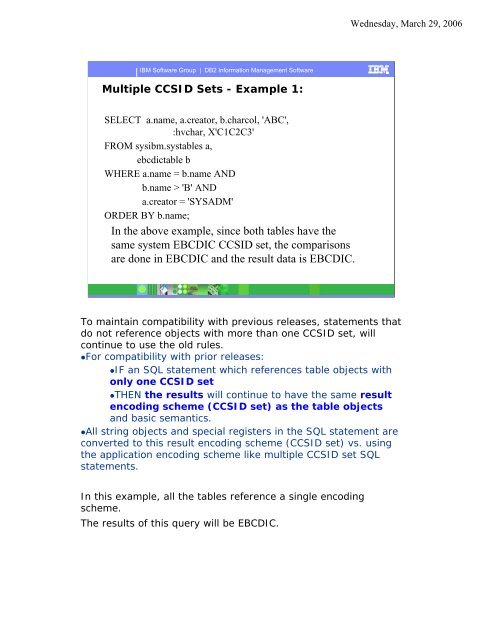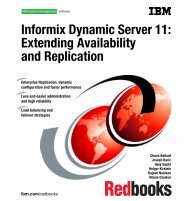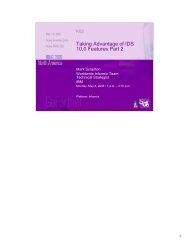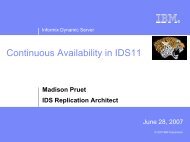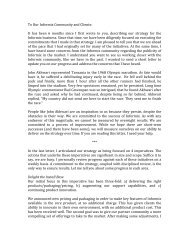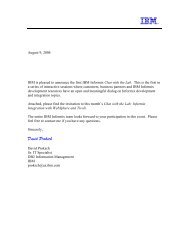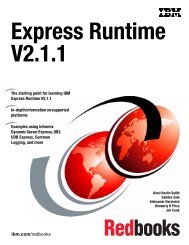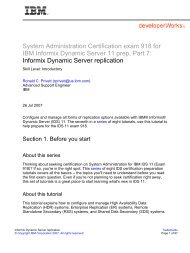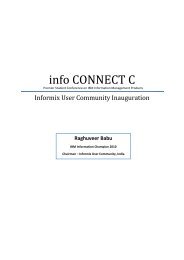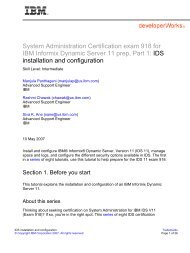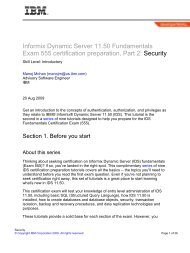CCSID 102 â What's a CCSID and why do I care?
CCSID 102 â What's a CCSID and why do I care?
CCSID 102 â What's a CCSID and why do I care?
Create successful ePaper yourself
Turn your PDF publications into a flip-book with our unique Google optimized e-Paper software.
Wednesday, March 29, 2006<br />
IBM Software Group | DB2 Information Management Software<br />
Multiple <strong>CCSID</strong> Sets - Example 1:<br />
SELECT a.name, a.creator, b.charcol, 'ABC',<br />
:hvchar, X'C1C2C3'<br />
FROM sysibm.systables a,<br />
ebcdictable b<br />
WHERE a.name = b.name AND<br />
b.name > 'B' AND<br />
a.creator = 'SYSADM'<br />
ORDER BY b.name;<br />
In the above example, since both tables have the<br />
same system EBCDIC <strong>CCSID</strong> set, the comparisons<br />
are <strong>do</strong>ne in EBCDIC <strong>and</strong> the result data is EBCDIC.<br />
To maintain compatibility with previous releases, statements that<br />
<strong>do</strong> not reference objects with more than one <strong>CCSID</strong> set, will<br />
continue to use the old rules.<br />
•For compatibility with prior releases:<br />
•IF an SQL statement which references table objects with<br />
only one <strong>CCSID</strong> set<br />
•THEN the results will continue to have the same result<br />
encoding scheme (<strong>CCSID</strong> set) as the table objects<br />
<strong>and</strong> basic semantics.<br />
•All string objects <strong>and</strong> special registers in the SQL statement are<br />
converted to this result encoding scheme (<strong>CCSID</strong> set) vs. using<br />
the application encoding scheme like multiple <strong>CCSID</strong> set SQL<br />
statements.<br />
In this example, all the tables reference a single encoding<br />
scheme.<br />
The results of this query will be EBCDIC.


